 |
CRACOW (KRAKÓW) PHOTO TOUR PART 2 - ROYAL CASTLE - CHURCHES - OLD JEWISH QUARTER |
Bill Biega's Photo Collection |
|
Click on any illustration with colored border to see it full size. Then click on "Back" button to return to this page.
Our walk continues along Grodzka Street from the Rynek to the ancient royal castle Wawel. From there we will go to the old Jewish quarter Kazimierz.
| ||
|
Leaving the Rynek we pass the tiny 10thC. church of St.Adalbert (św.Wojciech), then the 17thC. Baroque church of Sts.Peter&Paul.
The 11thC. church of St.Andrew has a Romanesque exterior, but the interior was remodeled in Baroque style in the 17thC. |
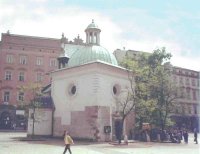
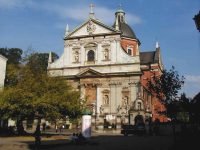
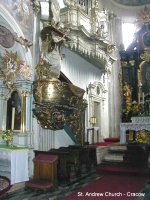
| |
|
Walking down Kanoniczna street we get our first view of the Royal Castle and Cathedral on Wawel Hill. We pass through the entry gate decorated with the heraldic shieldsS of the principalties that made up the early kingdom of Poland. Looking up at the Castle we see drainspouts that resemble dragon heads. |
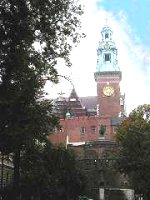
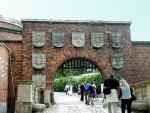
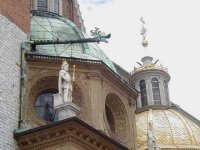
| |
|
First we visit the 16thC. Renaissance palace of the
Wawel. Entry is through the three-storey arcaded courtyard. Note the old frescoes on the walls.
The many halls of the palace contain priceless artifacts, including over 300 Flemish tapestries from the 16thC. |


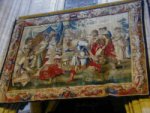
| |
| The present Gothic Cathedral was built in the 14thC. over an earlier 10thC. building. Many of the altars are in opulent Baroque style.
The tombs of most Polish kings are located in this Cathedral, where they were crowned. One of the more beautiful tombs, always decorated with flowers, is that of Queen Jadwiga, whose marriage to Prince Jogaila of Lithuania founded the Polish Jagiełło dynasty and created the union that lasted centuries. Note the dog lying at her feet. |
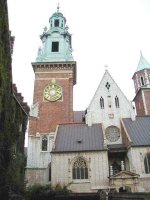
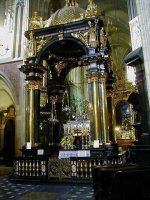
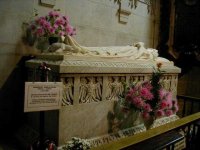
| |
| From the Wawel walk along the bank of the river Vistula, passing chess players, to the Pauline Monastery and Church On the Rock, which contains the tombs of many Polish artists.
Behind the gardens of the Monastery, the church of St.Catherine was built in the 14thC. by Casimir the Great. It is considered one of the finest Gothic churches in Poland. On the street corner the small building is from an even earlier church. |
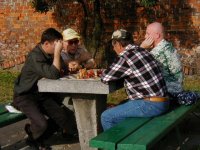
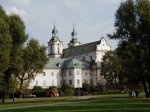
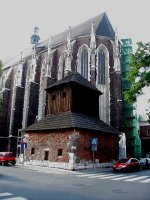
| |
| Casimir the Great offered the Jews of western Europe shelter from persecution and established an autonomus town Kazimierz in the early 14thC. The main street is Szeroka (Broad street). On it the Old Synagogue was destroyed by Nazis and has just been restored. The Izaak Synagogue is still in use today. |

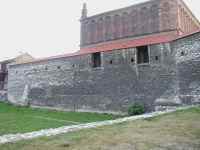

| |
Return to Top of page.
Return to Part 1.